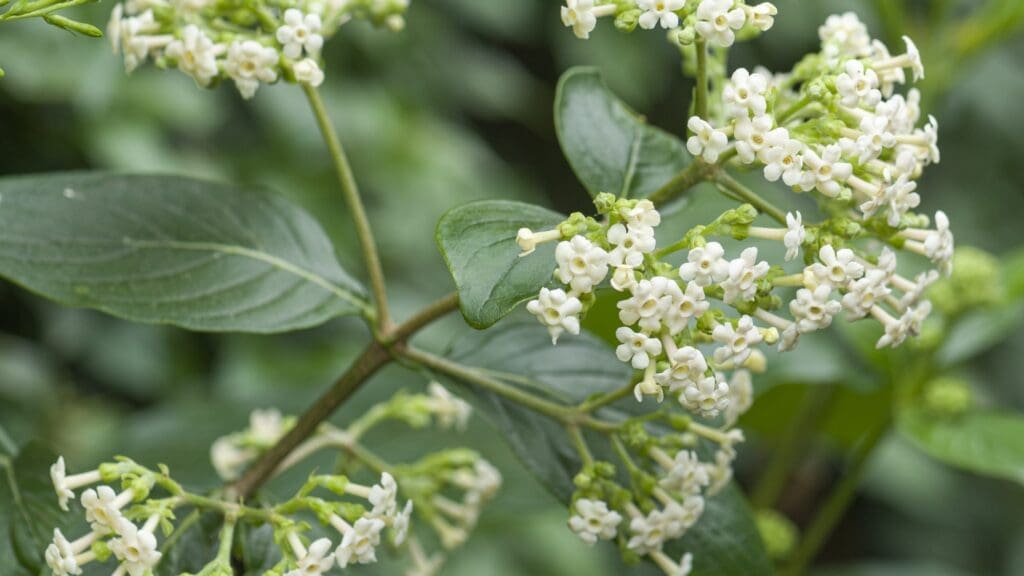
China officinalis
Latin name: China officinalis
Short name: Chin
Common name: Peruvian bark | Cinchona bark | Jesuit’s bark | Quinine tree | Fever tree
Primary miasm: Sycotic Secondary miasm(s): Psoric
Kingdom: Plants
Family: Rubiaceae
- Symptomatology
- Remedy Information
- Differentiation & Application
China officinalis is prepared from the dried bark of the Cinchona tree, primarily Cinchona officinalis, native to South America. The bark contains a range of alkaloids, the most notable of which is quinine (C₂₀H₂₄N₂O₂), historically known for its antimalarial action.
Cinchona bark was traditionally used to treat malaria, fevers, and chills. Quinine derived from the bark is still used pharmaceutically (with caution) for malaria. The bark has also been used as a bitter digestive stimulant, and in tonics such as tonic water.
First proved by Samuel Hahnemann, who discovered its fever-producing properties on healthy individuals—an observation that led to the formulation of the homeopathic law of similars. Published in Materia Medica Pura.
Blood; liver; spleen; digestive system; nerves; mucous membranes; mind; senses (especially hearing).
Hard pressure; bending double; warmth; after sleeping; walking in open air.
Touch; draughts; night; mental exertion; loss of fluids; noise; motion; slight causes.
- more anxious, chilly, and burning; China is more bloated, indifferent, and periodic in nature.
- Carbo vegetabilis – Also has debility from fluid loss, but with more pronounced coldness and desire for air. China has hypersensitivity and fullness; Carbo veg. is collapsed and gasping.
- Ferrum metallicum – Both follow blood loss. Ferrum is more flushing and pale alternately, with easy bleeding. China has more distension and periodicity.
- Phosphoric acid – Also has mental indifference after loss of fluids or grief. Phos-ac. is more emotionally apathetic and quietly withdrawn; China is sensitive and irritable.
- Cinchona sulphurica (China sulph.) – Similar in sphere, but with more violent chills, stronger liver action, and offensive discharges. Often used when China fails.
- Complementary: Arnica montana, Ferrum metallicum
- Antidotes: Arsenicum album, Belladonna
- Inimical: Ipecacuanha (some authors suggest incompatibility)
- Follows Well: Arnica, Carbo vegetabilis, Pulsatilla
- Precedes Well: Sulphur, China sulphurica
China officinalis is a remedy of exhaustion, hypersensitivity, and periodicity, especially after loss of fluids. Its central theme is debility from depletion—the body becomes overwhelmed by minor stimuli, with intense reactions to light, sound, touch, and pain. The mind is detached or melancholic; the body, bloated yet drained.
Use in post-haemorrhagic weakness, chronic fevers with periodicity, debility after diarrhoea or night sweats. Excellent for patients weakened by excessive breastfeeding, overwork, or chronic malarial states. Use 30C or 200C in acute situations; LM potencies in chronic fatigue conditions.
Mind
- Sensitive, noise, to
- Sensitive, touch, to
- Delusions, persecuted, of
- Indifference, external things, to
- Irritability, trifles, from
- Loquacity, alternating with taciturnity
Head
- Pain, pulsating, temples
- Headache, touch, from slight
- Vertigo, anaemia, from
- Congestion, head, from loss of fluids
Stomach & Abdomen
- Flatulence, upper abdomen
- Distension, tympanitic
- Pain, pressure amel.
- Appetite, ravenous, yet weak
Rectum
- Diarrhoea, painless
- Diarrhoea, night, during
- Stools, undigested food
- Haemorrhoids, painless, bleeding
General
- Weakness, from loss of fluids
- Oversensitive, senses
- Debility, chronic
- Sweat, night, exhausting
- Fever, periodic, same hour daily
Samuel Hahnemann – Materia Medica Pura
James Tyler Kent – Lectures on Homoeopathic Materia Medica
John Henry Clarke – Dictionary of Practical Materia Medica
Constantine Hering – Guiding Symptoms of Our Materia Medica
William Boericke – Pocket Manual of Materia Medica
